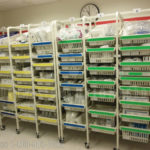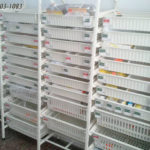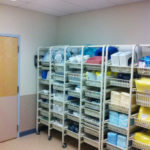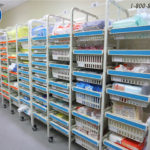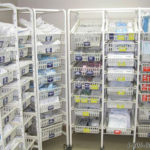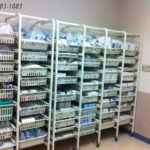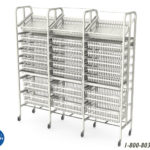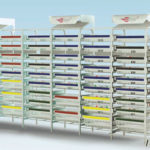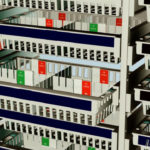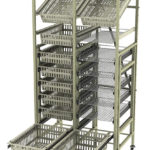To provide high-quality patient care, hospital staff must have the supplies they need readily available. However, inventory management in healthcare facilities can quickly become a headache. Without an effective system, stockouts occur, resulting in staff frustration and delays in patient care. When stockouts are common, nurses often hoard supplies that tend to run out, which prevents managers from having an accurate inventory count and increases the likelihood of overstocked products. And when supplies are overstocked, products may sit unused on shelves, occupying valuable storage space and potentially expiring without being used. Keep reading to learn how the hospital two-bin Kanban system can save you time and money.
The two-bin Kanban system is an innovative inventory management system that provides more accurate inventory control and minimizes the risk of stockouts and surpluses. By implementing this simple inventory system in your hospital, you can maintain optimal stock levels at all times, reduce costs, improve efficiency, and provide better patient care. (Check out more of our healthcare storage solutions here.)
In this article, you’ll read about the following:
- What is a Kanban system?
- How two-bin inventory management works
- RFID hospital Kanban system
- Two-bin Kanban system v. traditional PAR system
- Benefits of the Kanban two-bin inventory system
To provide high-quality patient care, hospital staff must have the supplies they need readily available. However, inventory management in healthcare facilities can quickly become a headache. Without an effective system, stockouts occur, resulting in staff frustration and delays in patient care. When stockouts are common, nurses often hoard supplies that tend to run out, which prevents managers from having an accurate inventory count and increases the likelihood of overstocked products. And when supplies are overstocked, products may sit unused on shelves, occupying valuable storage space and potentially expiring without being used. Keep reading to learn how the hospital two-bin Kanban system can save you time and money.
The two-bin Kanban system is an innovative inventory management system that provides more accurate inventory control and minimizes the risk of stockouts and surpluses. By implementing this simple inventory system in your hospital, you can maintain optimal stock levels at all times, reduce costs, improve efficiency, and provide better patient care. (Check out more of our healthcare storage solutions here.)
In this article, you’ll read about the following:
- What is a Kanban system?
- How two-bin inventory management works
- RFID hospital Kanban system
- Two-bin Kanban system v. traditional PAR system
- Benefits of the Kanban two-bin inventory system
What is a Hospital Two-Bin Kanban System?
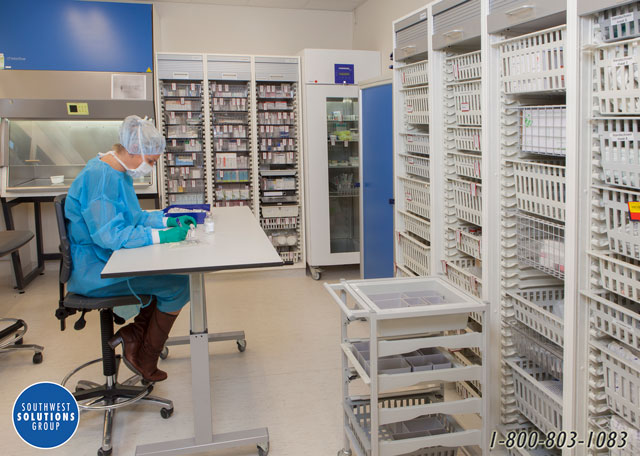
In healthcare, Kanban has been implemented for optimal inventory management through a two-bin storage system. The two-bin Kanban system is known for low-cost, high-use supplies bought in bulk, typically the most difficult to track accurately.
How Two-Bin Inventory Management Works
Each item’s stock is split into two storage bins in a two-bin inventory system. The amount of product kept in stock should be determined based on calculated PAR levels. The two bins are typically stored end to end, with one bin in front and one behind, if storage space allows. Clinical staff pulls supplies from the front bin. Then, when the front bin is empty, the staff member places the empty bin in a designated spot (for example, the top shelf of the storage unit) and pulls the full rear bin forward.
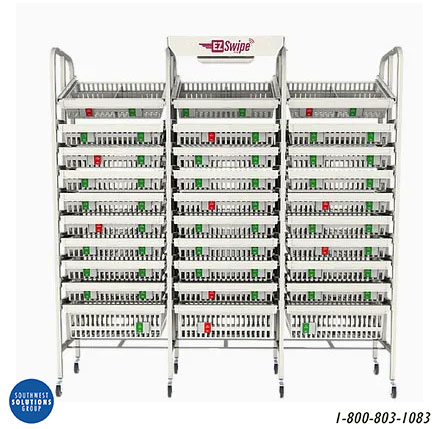
RFID Hospital Kanban System
The RFID basket system is a comprehensive storage solution that utilizes the two-bin Kanban principle, providing a convenient alternative to the standard method using plastic bins on shelving units. These high-density storage units contain baskets divided into two compartments, with available stock in the front compartment and backup stock in the rear compartment. Color-coded labels are available to help clinicians more easily locate needed supplies.
Each compartment has a sliding RFID label, which is green when products are in stock. When a clinician takes the last item from the front compartment of the basket, they slide the label to the right, turning the display red to indicate that the product is on order. The system automatically sends a replenishment order to supply staff. While the supplies are on order, clinicians can draw from the backup stock compartment. The baskets slide out from the storage unit to provide easy access to supplies in either compartment.
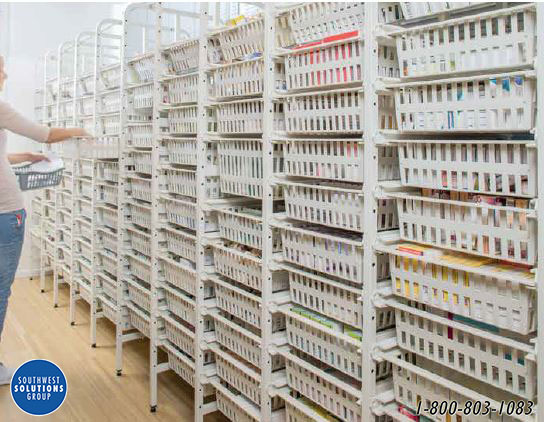
Two-Bin Kanban System v. Traditional PAR System
Many hospitals rely on a traditional PAR system for inventory management. So how does the two-bin Kanban system compare to the traditional PAR inventory system?
A traditional PAR inventory system revolves around maintaining Periodic Automatic Replenishment (PAR) levels for each item. Supply staff periodically count the supplies at each storage location to determine the quantity needed to replenish the stock to its designated PAR level. These manual counts are time-consuming and potentially inaccurate, especially when stockers visually estimate the counts to save time. These inaccuracies increase the risk of stockouts or surpluses.
Aspects of the traditional PAR system include:
- Manual counting
- Inaccurate inventory counts
- Stockouts and manual requisitions common
- Variable refill quantities
- FIFO stock rotation not promoted
The two-bin Kanban system solves the problems of the traditional PAR system, virtually eliminating stockouts and enabling supply staff to work more efficiently. With the two-bin system, supply staff scan empty bins rather than manually counting all items, saving immense time and effort. The system also provides improved, up-to-date inventory visibility.
Advantages of the two-bin system include:
- No manual counting
- Accurate inventory counts
- Stockouts and manual requisitions virtually eliminated
- Standardized refill quantities
- FIFO stock rotation promoted
Benefits of the Hospital Two-Bin Kanban System
Stockouts Eliminated
The Kanban two-bin inventory system has proven to eliminate stockouts virtually. Clinical staff will be happier and able to perform their jobs more effectively, and they will no longer feel the need to keep a secret stash of supplies. Most importantly, there will no longer be delays in patient care due to out-of-stock products.
Increased Efficiency
The two-bin system allows supply stockers to work more quickly and efficiently. Both barcode and RFID methods eliminate the need for manual counting; stockers can see which products need to be restocked, indicated by the empty bins. In addition, the bins are always stocked with the same quantity, providing a standardized workflow.
Improved Stock Rotation
In a traditional PAR inventory system, new supplies may be stacked on top of the remaining supplies, increasing the risk of the older supplies expiring. In comparison, newer supplies are used first. In contrast, the Kanban two-bin system promotes FIFO stock rotation, in which the oldest products are used first. FIFO stock rotation reduces the risk of supplies expiring on the shelves and going to waste.
Demand Planning
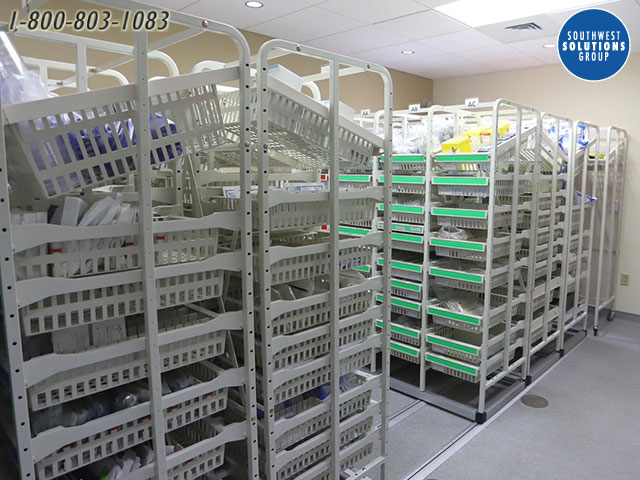
Reduced Costs
Implementing a Kanban system for your hospital supply rooms will save you money in the long run. When you can determine optimal PAR levels and prevent overstocking, you’ll no longer be paying to maintain excess inventory or absorbing the cost of products that expire on the shelves. You’ll also benefit from reduced labor costs.
Space Savings
Though the two-bin system might at first appear to take up more space, the system allows you to optimize your inventory levels and reduce overstocking, which results in less space needed for supply storage. To make efficient use of your storage space, adjustable open shelving units are recommended, along with different-sized bins for storing supplies of various sizes and PAR levels.
What is a Hospital Two-Bin Kanban System?

In healthcare, Kanban has been implemented for optimal inventory management through a two-bin storage system. The two-bin Kanban system is known for low-cost, high-use supplies bought in bulk, typically the most difficult to track accurately.
How Two-Bin Inventory Management Works
Each item’s stock is split into two storage bins in a two-bin inventory system. The amount of product kept in stock should be determined based on calculated PAR levels. The two bins are typically stored end to end, with one bin in front and one behind, if storage space allows. Clinical staff pulls supplies from the front bin. Then, when the front bin is empty, the staff member places the empty bin in a designated spot (for example, the top shelf of the storage unit) and pulls the full rear bin forward.

RFID Hospital Kanban System
The RFID basket system is a comprehensive storage solution that utilizes the two-bin Kanban principle, providing a convenient alternative to the standard method using plastic bins on shelving units. These high-density storage units contain baskets divided into two compartments, with available stock in the front compartment and backup stock in the rear compartment. Color-coded labels are available to help clinicians more easily locate needed supplies.
Each compartment has a sliding RFID label, which is green when products are in stock. When a clinician takes the last item from the front compartment of the basket, they slide the label to the right, turning the display red to indicate that the product is on order. The system automatically sends a replenishment order to supply staff. While the supplies are on order, clinicians can draw from the backup stock compartment. The baskets slide out from the storage unit to provide easy access to supplies in either compartment.

Two-Bin Kanban System v. Traditional PAR System
Many hospitals rely on a traditional PAR system for inventory management. So how does the two-bin Kanban system compare to the traditional PAR inventory system?
A traditional PAR inventory system revolves around maintaining Periodic Automatic Replenishment (PAR) levels for each item. Supply staff periodically count the supplies at each storage location to determine the quantity needed to replenish the stock to its designated PAR level. These manual counts are time-consuming and potentially inaccurate, especially when stockers visually estimate the counts to save time. These inaccuracies increase the risk of stockouts or surpluses.
Aspects of the traditional PAR system include:
- Manual counting
- Inaccurate inventory counts
- Stockouts and manual requisitions common
- Variable refill quantities
- FIFO stock rotation not promoted
The two-bin Kanban system solves the problems of the traditional PAR system, virtually eliminating stockouts and enabling supply staff to work more efficiently. With the two-bin system, supply staff scan empty bins rather than manually counting all items, saving immense time and effort. The system also provides improved, up-to-date inventory visibility.
Advantages of the two-bin system include:
- No manual counting
- Accurate inventory counts
- Stockouts and manual requisitions virtually eliminated
- Standardized refill quantities
- FIFO stock rotation promoted
Benefits of the Hospital Two-Bin Kanban System
Stockouts Eliminated
The Kanban two-bin inventory system has proven to eliminate stockouts virtually. Clinical staff will be happier and able to perform their jobs more effectively, and they will no longer feel the need to keep a secret stash of supplies. Most importantly, there will no longer be delays in patient care due to out-of-stock products.
Increased Efficiency
The two-bin system allows supply stockers to work more quickly and efficiently. Both barcode and RFID methods eliminate the need for manual counting; stockers can see which products need to be restocked, indicated by the empty bins. In addition, the bins are always stocked with the same quantity, providing a standardized workflow.
Improved Stock Rotation
In a traditional PAR inventory system, new supplies may be stacked on top of the remaining supplies, increasing the risk of the older supplies expiring. In comparison, newer supplies are used first. In contrast, the Kanban two-bin system promotes FIFO stock rotation, in which the oldest products are used first. FIFO stock rotation reduces the risk of supplies expiring on the shelves and going to waste.
Demand Planning

Reduced Costs
Implementing a Kanban system for your hospital supply rooms will save you money in the long run. When you can determine optimal PAR levels and prevent overstocking, you’ll no longer be paying to maintain excess inventory or absorbing the cost of products that expire on the shelves. You’ll also benefit from reduced labor costs.
Space Savings
Though the two-bin system might at first appear to take up more space, the system allows you to optimize your inventory levels and reduce overstocking, which results in less space needed for supply storage. To make efficient use of your storage space, adjustable open shelving units are recommended, along with different-sized bins for storing supplies of various sizes and PAR levels.
What is a Hospital Two-Bin Kanban System?
Kanban is an inventory control system used for lean manufacturing. The term “Kanban” is a Japanese word that means “sign” or “visual card,” and it refers to the use of visual cues to prompt action to maintain the flow of a process (e.g., reordering stock). Initially developed by a Toyota engineer, Kanban is designed to limit excess inventory buildup and minimize process bottlenecks.
In healthcare, Kanban has been implemented for optimal inventory management through a two-bin storage system. The two-bin Kanban system is known for low-cost, high-use supplies bought in bulk, typically the most difficult to track accurately.
How Two-Bin Inventory Management Works
Each item’s stock is split into two storage bins in a two-bin inventory system. The amount of product kept in stock should be determined based on calculated PAR levels. The two bins are typically stored end to end, with one bin in front and one behind, if storage space allows. Clinical staff pulls supplies from the front bin. Then, when the front bin is empty, the staff member places the empty bin in a designated spot (for example, the top shelf of the storage unit) and pulls the full rear bin forward.
Each bin contains a label with a barcode designating the specific product stored there. Then, when supply staff makes their rounds, they scan the barcodes on the empty bins to automatically generate the pick quantity required to replenish the bin. The supply stocker then fills the empty bins and places them back on the shelf behind the bin that is still in use.
RFID Hospital Kanban System

Each compartment has a sliding RFID label, which is green when products are in stock. When a clinician takes the last item from the front compartment of the basket, they slide the label to the right, turning the display red to indicate that the product is on order. The system automatically sends a replenishment order to supply staff. While the supplies are on order, clinicians can draw from the backup stock compartment. The baskets slide out from the storage unit to provide easy access to supplies in either compartment.

Two-Bin Kanban System v. Traditional PAR System
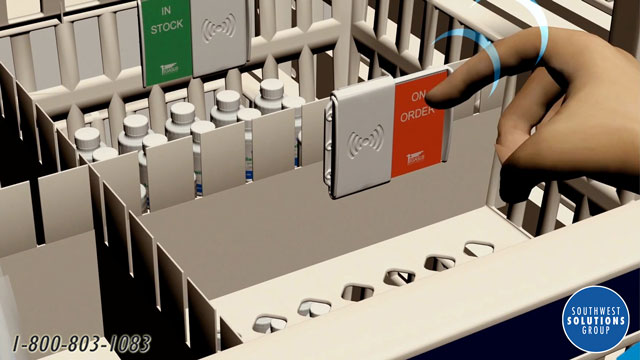
A traditional PAR inventory system revolves around maintaining Periodic Automatic Replenishment (PAR) levels for each item. Supply staff periodically count the supplies at each storage location to determine the quantity needed to replenish the stock to its designated PAR level. These manual counts are time-consuming and potentially inaccurate, especially when stockers visually estimate the counts to save time. These inaccuracies increase the risk of stockouts or surpluses.
Aspects of the traditional PAR system include:
- Manual counting
- Inaccurate inventory counts
- Stockouts and manual requisitions common
- Variable refill quantities
- FIFO stock rotation not promoted
The two-bin Kanban system solves the problems of the traditional PAR system, virtually eliminating stockouts and enabling supply staff to work more efficiently. With the two-bin system, supply staff scan empty bins rather than manually counting all items, saving immense time and effort. The system also provides improved, up-to-date inventory visibility.
Advantages of the two-bin system include:
- No manual counting
- Accurate inventory counts
- Stockouts and manual requisitions virtually eliminated
- Standardized refill quantities
- FIFO stock rotation promoted
Benefits of the Hospital Two-Bin Kanban System
Stockouts Eliminated
The Kanban two-bin inventory system has proven to eliminate stockouts virtually. Clinical staff will be happier and able to perform their jobs more effectively, and they will no longer feel the need to keep a secret stash of supplies. Most importantly, there will no longer be delays in patient care due to out-of-stock products.
Increased Efficiency
The two-bin system allows supply stockers to work more quickly and efficiently. Both barcode and RFID methods eliminate the need for manual counting; stockers can see which products need to be restocked, indicated by the empty bins. In addition, the bins are always stocked with the same quantity, providing a standardized workflow.
Improved Stock Rotation
In a traditional PAR inventory system, new supplies may be stacked on top of the remaining supplies, increasing the risk of the older supplies expiring. In comparison, newer supplies are used first. In contrast, the Kanban two-bin system promotes FIFO stock rotation, in which the oldest products are used first. FIFO stock rotation reduces the risk of supplies expiring on the shelves and going to waste.
Demand Planning

Reduced Costs
Implementing a Kanban system for your hospital supply rooms will save you money in the long run. When you can determine optimal PAR levels and prevent overstocking, you’ll no longer be paying to maintain excess inventory or absorbing the cost of products that expire on the shelves. You’ll also benefit from reduced labor costs.
Space Savings
Though the two-bin system might at first appear to take up more space, the system allows you to optimize your inventory levels and reduce overstocking, which results in less space needed for supply storage. To make efficient use of your storage space, adjustable open shelving units are recommended, along with different-sized bins for storing supplies of various sizes and PAR levels.
Contact Us for Hospital Two-Bin Kanban Systems
Southwest Solutions Group® provides design and installation services for two-bin Kanban systems for hospitals on GSA, Vizient, and various other Group Purchasing Organization contracts. We will also provide a free consultation to determine your exact needs and specifications before the design begins. To learn more or to speak with a specialist, call us at 1-800-803-1083 or send us a message today.
Resources
Healthcare Testimonials

“Southwest Solutions Group assisted us in the setup of equipment and services for our offsite medical record warehouse housing over one million charts. They have moved over 330,000 records from the main hospital to the medical record warehouse in a weekend time period, and converted thousands of charts for us. They have provided us a new chart tracking system, labeling system, and file conversion services over a multi-month process. Their IT group was able to modify our existing records management software to “talk” to our main software program so we could print color coded labels for our medical record charts. In addition, they have provided many other services to Parkland hospital including file shelving, hospital storage equipment needs, and software support. Southwest Solutions Group does exceptional work.”

“Our experience with Southwest Solutions Group could not have been better. Matt (sales rep) was very knowledgeable and attentive to our needs. Our shelving project required many changes and revisions and Matt never flinched when thrown a challenge. Many thanks to the installation crew for putting in a twelve hour day to complete our project on time. We give a 100% satisfaction rating to Matt and the Southwest Solutions Group team.”
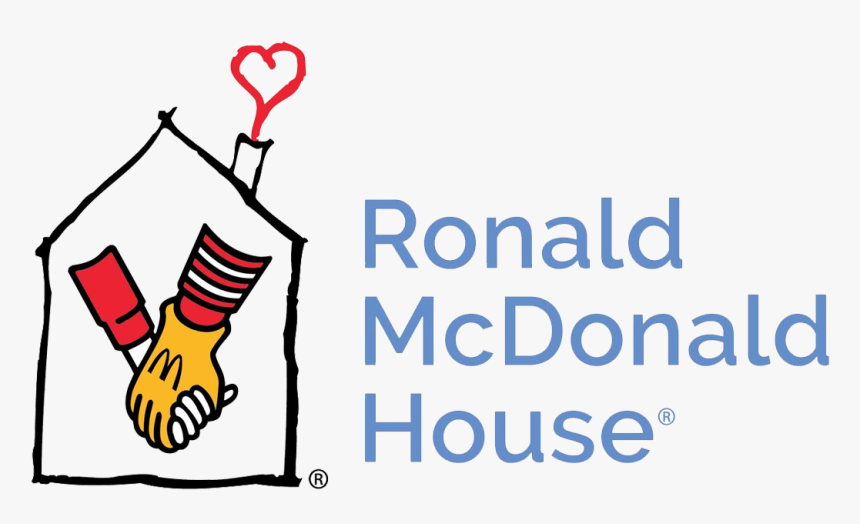
“Thank you for your donation! I wanted to let you know that we ordered a donor sign for our storage room. The sign will be displayed outside the storage room located near the main kitchen/dining room. This should give you some good exposure!”
See more healthcare testimonials

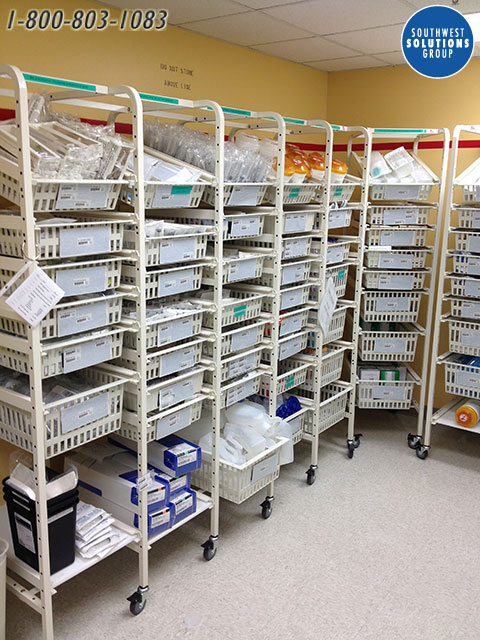
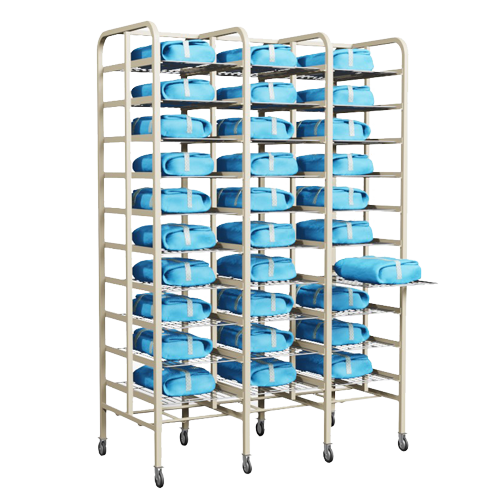 Sterile Core Racks
Sterile Core Racks
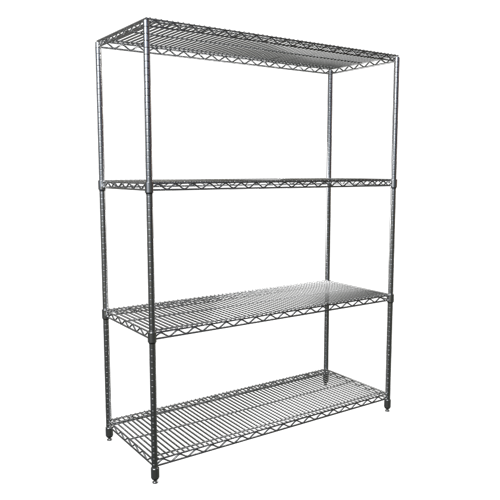
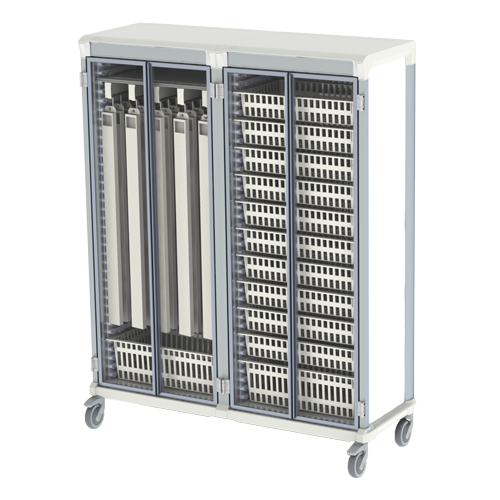 Hospital Carts
Hospital Carts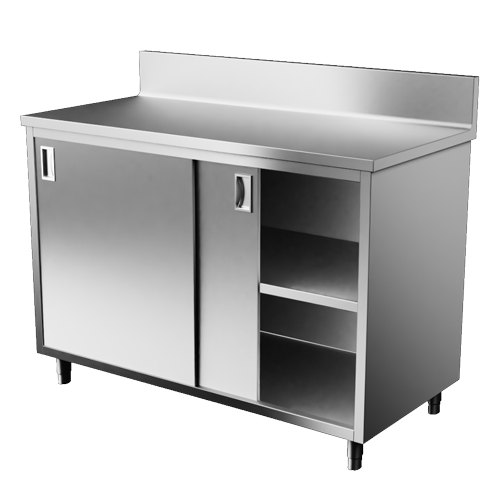 Stainless Products
Stainless Products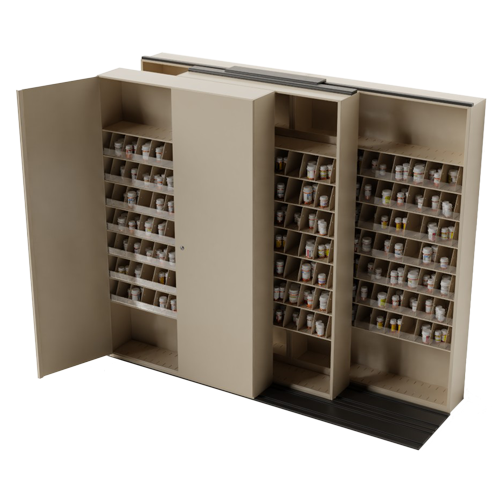 Pharmacy Storage Solutions
Pharmacy Storage Solutions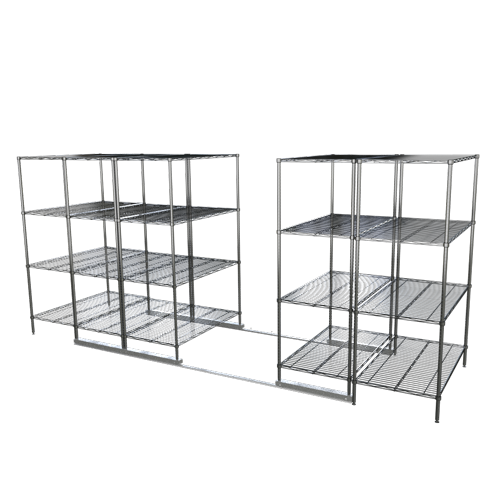 All Hospital Products
All Hospital Products RFID Kanban Inventory Management Racks
RFID Kanban Inventory Management Racks Medical Rack Steel Specifications
Medical Rack Steel Specifications